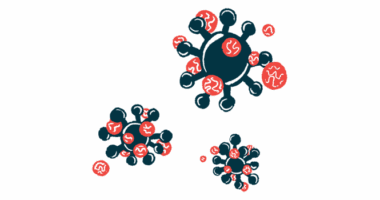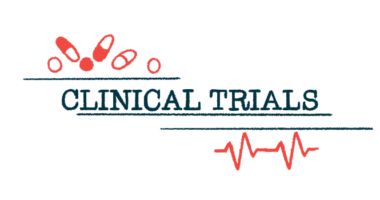Maralixibat Phase 3 trial for cholestasis-related itch is enrolling
EXPAND is expected to test up to 90 people, aged 6 months and older

Enrollment is ongoing in a Phase 3 clinical trial that’s designed to evaluate Mirum Pharmaceuticals’ maralixibat for treatment-resistant itching, or pruritus, associated with rare cholestatic conditions.
The trial, dubbed EXPAND (NCT06553768), is expected to enroll up to 90 people, ages 6 months and older, at multiple sites in the U.S., South America, Europe, and the Middle East. At least three sites — in Los Angeles, New Orleans, and New York — are actively recruiting, and enrollment is due to wrap up in 2026, according to a Mirum press release that announced financial and corporate updates.
Maralixibat is approved in the U.S. and European Union under the name Livmarli to treat pruritus associated with Alagille syndrome and progressive familial intrahepatic cholestasis (PFIC). Both rare genetic diseases are marked by cholestasis, or a slowed flow of the digestive fluid bile from the liver to the intestines.
Reduced bile flow can lead to bile accumulating in the liver and leaking into the bloodstream, causing symptoms like pruritus. Left untreated, too much bile in the liver can lead to irreversible liver scarring (cirrhosis) and liver failure, with the only therapeutic option being a liver transplant.
EXPAND recruitment will exclude those with Alagille, PFIC, intrahepatic cholestasis of pregnancy (ICP), primary biliary cholangitis (PBC), and primary sclerosing cholangitis (PSC) who did not undergo a liver transplant. ICP is a form of cholestasis that occurs in the later stages of pregnancy, while PBS and PSC are chronic, autoimmune forms of cholangitis, where inflammation of the bile ducts that transport bile can result in cholestasis. Patients with decompensated cirrhosis, wherein irreversible liver scarring affects the organ’s function, complications of cirrhosis, and liver or bile ducts cancer also aren’t eligible.
Cholestasis can also be caused by hepatitis, that is, liver inflammation; alcohol-associated liver disease, a form of fatty liver disease; bacterial infections, gallstones, or inflammation of the pancreas. Gallstones are hard deposits of bile compounds that can form in the gallbladder, where bile is stored until it’s needed for digestion, and become stuck in the bile ducts.
Treatment for cholestasis generally depends on its underlying cause and severity, which can vary from person to person. Medications include UDCA (sold as Urso and Actigall) and cholestyramine (sold as Prevalite and Locholest, among others) to help reduce bile buildup and/or relieve itching.
What is EXPAND assessing in cholestasis?
EXPAND will evaluate whether maralixibat can safely and effectively relieve pruritus in children and adults with rare cholestatic diseases who’ve failed to respond to other therapies and have no other treatment options. Those taking UDCA or anti-pruritus medications must be on a stable regimen in the 30 days before the study and continue throughout.
Participants will be randomly assigned to an oral solution of either 300 micrograms of maralixibat per kg of body weight (mcg/kg) or a placebo, once daily for a week and then twice daily for 19 weeks, or nearly 4.5 months.
Those initially assigned maralixibat will continue receiving 300 mcg/kg twice daily for up to 39 weeks, or about nine months, while the patients assigned a placebo will switch to 300 mcg/kg once daily for a week and then twice daily for 19 weeks.
The study’s primary goal is to assess the change in the caregiver-reported ItchRO(Obs) severity score from its start to the last two months of treatment. Scores range from 0 (no itching) to 4 (extreme itching). Changes in the total blood levels of bile acids, the main component in bile, will also be assessed.
Mirum is also testing volixibat, another oral candidate, to see if it can safely and effectively reduce itching due to PSC and PBC.
Enrollment in a Phase 2b trial called VISTAS (NCT04663308), which is testing volixibat in PSC patients, is expected to be completed in the second half of this year, with top-line data due in 2026. The ongoing Phase 2 VANTAGE trial (NCT05050136), which is evaluating volixibat in PBC patients, is expected to complete enrollment in 2026.
“2024 marked a significant year for Mirum,” said Chris Peetz, CEO of Mirum. “We continued our leadership in cholestatic disease with a label expansion for Livmarli and positive interim analyses for volixibat in PSC and PBC.”







